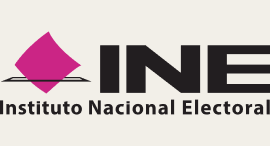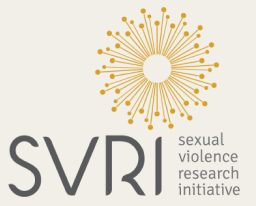South Korea is lauded globally for its early and swift response to the COVID-19 pandemic, but online and offline misinformation in some of the country’s religious groups played an outsize role in the spread of disease. The majority of South Korea’s “group infections”—which are defined as epidemics in specific areas, such as schools, companies, churches, or factories—originated in the country’s religious institutions. Churches accounted for nearly 40 per cent of the country’s total cases since Jan. 20, when the first confirmed case of the coronavirus came out. The most widely reported example of this phenomenon was the Shincheonji Church of Jesus, but misinformation amongst other religious leaders also contributed to the spread of COVID-19 in the country. This report is an effort to outline group infections in religious centers in South Korea, and analyze the role that misinformation played in how the virus spread amongst members of some of the country’s churches.
Shincheonji Church of Jesus
On February 18, 2020 a 61-year-old woman living in Daegu, South Korea was diagnosed as the country’s 31st COVID-19 patient. She was a member of the Shincheonji Church of Jesus, a secretive Christian group in South Korea. Lee Man-Hee, the founder of the church, calls himself as the Messiah and has been accused of brainwashing members. Many South Koreans have called for the church to be disbanded, as it is widely perceived to be a cult. The 31st diagnosis in South Korea was a ‘super spreader’ event, and it changed the trajectory of the disease in the country significantly. About 5,300 confirmed casesof COVID-19 in South Korea have now been linked by contact tracers to the Shincheonji Church, including direct and secondaryinfections.
The secretive operations of the Shincheonji Church means that members are not easy to identify. Accounts from a Shincheonji Church victim group reported that during the epidemic, the leader of the church texted church members’ cell phones, articulating that COVID-19 was a “great disaster” predicted in the book of Revelation, and that church members should not worry about the virus. “He had misled his followers with such an absurd logic, saying that the Coronavirus was caused by demons, who saw the rapid growth of Shincheonji and tried to stop it,” said Yeon-ho Hong, former leader of the national coalition of Shincheonji victims. The church members, Yeon-ho described, would have to endure the virus and win the test. Members continued to worship in confined spaces in their churches, against government advice to halt mass gatherings. Yeon-ho said “church members were told not to be afraid of the illness.” Shincheonji’s spokespeople have articulated that the directives were never church policy, and that the church leaders are co-operating with the government.
According to a month-long investigation by the South Korean federal government and the City of Daegu, between February 22nd to March 12th 2020 about 4,100 COVID-19 cases originated from the Daegu Shincheonji center. At that time, the country’s total confirmed cases sat at around 8,000, according to Central Disease Control and Prevention Headquarters, making the church the origin of more than half the cases.
Eunhye River Church
At Eunhye River Church in Seongnam, Gyeonggi Province, seventy eight members were infected by the virus. Eunhye River Church leaders believed that spraying salt water in one’s mouth would prevent COVID-19. The false social media rumors online suggested that salt water would prevent coronavirus because of its antiseptic properties.
“We strongly suspect that there was a confirmed case among the worshippers caused [by] salt water spray that was not disinfected. Sharing salt water spray [is] actually no different from direct [COVID-19] contact,” said Lee Hee-young, co-head of the Covid-19 emergency team in Gyeonggi Province. Closed circuit surveillance tape showed that the Eunhye River Church sprayed salt water [on] members, according an investigation by Ms. Hee-young’s team. She identified the spread of the misinformation as an ‘infodemic.’
Manmin Central Church
A ended up infecting a number of people in different workplaces, according to the Korean CDC. Another former pastor of Manmin Central church confirmed the church’s position on the virus, saying that “church members were told not to be afraid of the illness.”
General group transmission
At Bucheon Life Water church another 48 people were infected, 32 at the On-cheon Church in Dongnae-gu, Busan, 10 at Geochang Church in Gyeungnam Province, and nine at the Gyuamseong Church in Buyeo, South Chungcheong Province, according to the Korean CDC. In these cases, it remains unclear if misinformation played a role in the churchgoers gathering against government regulations, but what is known is that mass gatherings took place and many of these infections reverberated throughout the country. Based on the Korean government’s contact tracing, a Eunhye Riber church member who was infected at church later infected his co-worker, who ended up infecting his wife.
The worst recorded case of the tertiary infection happened at a workplace of an infected Manmin Center church member. The church member’s workplace, a customer service call center, consists of multiple call booths in a cramped space and it created a cluster of infections over 150 individuals. Korea CDC diligently traced all contacts of the infected people and confirmed this cluster.
To be sure, many churches in South Korea took steps to bring worship services online following news of the coronavirus outbreak and as an added counter-measure the South Korean government created a plan to place public health officers at multi-use facilities such as religious facilities. The measures include no entry to the religious facilities without wearing a mask or multiple entrance check points for any symptoms before entering the facilities.
Compared to other countries, the virus has been successfully fought from spreading, thanks to a massive amount of testing, contact tracing, and preemptive quarantine measures. The South Korean government lifted the restrictions and further opened the country on May 6,, including the opening of theaters, restaurants, and shopping malls. The government also provided detailed guidelines such as mandatory wearing of masks and daily indoor air ventilation. The South Korean citizens are eager to go back to their daily lives.
To counter such future infection clusters at churches, the Seoul Metropolitan Government filed a complaint against the Sarang First Church, which did not follow the city’s ban on large assemblies and had a mass Sunday worship on March 29th. Kim Kang-lip, general coordinator of the Central Disaster and Safety Countermeasures Headquarters, said “the spread of the Covid-19 is slowing down, but we should not let our guard down.” He added “we are fully informing each religious facility about the dangers. We are asking them to recognize the severity of the situation and to adopt preventive measures as much as possible.”
We collaborated with 53 partner organizations worldwide to design and carry out our 2024 elections projects. We extend special gratitude to our lead partners in Brazil, Mexico and Pakistan, whose work we highlight in this essay.



The 2024 elections projects featured in here would not have been possible without the generous support of these funders.




Footnotes
References
Authors
Words by
Mr. Cho is the news reporter at JTBC, which is one of the main broadcasting companies in Korea. His coverage focuses on investigative reporting as well as national disaster. After one year of the research in the University of Reno-Nevada, he is currently working on the area of the digital strategy and coverage of the media. Mr. Cho received his M.A. in Journalism and Mass Communication from the University of Wisconsin, Madison. His undergraduate major is Education Sociology from Korea University, Seoul, Korea.
Professor Yun is the director of Center for Advanced Media Studies at Reynolds School of Journalism, University of Nevada, Reno. His research focuses on social psychological aspects of media and communication. The topics of his publications range from theories of communication, internet research methodology, social media, health communication, agenda setting, newspaper’s community capital, and social network analysis to big social media data analysis. He enjoys thinking about tools and theories developed by media and communication scholars.






